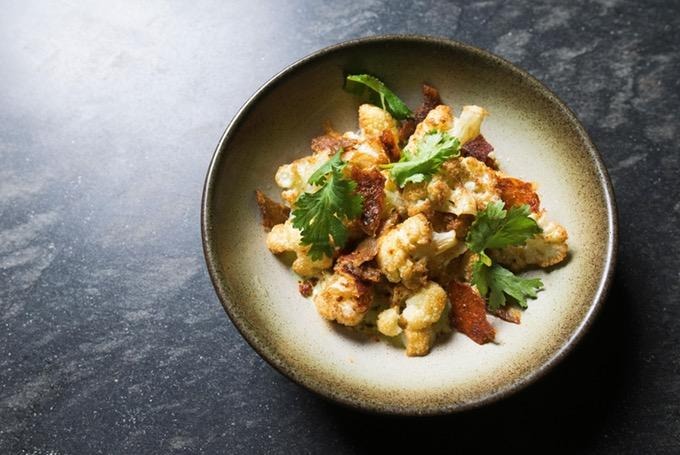All The Ways You Can Eat Chicken Skin
These incredible dishes leave the meat behind
Everyone has an opinion about chicken—some prefer white meat; others swear by dark. However, if there's one thing both camps can agree on, it's the awesomeness of bird's skin. That's why we're calling it now: chicken skin is the new bacon.
Once hailed as an unhealthy, chicken skin is the artery-clogging part of the fowl filled with so much fat that—gasp—people were actually throwing it out. Today, though, educated eaters know that chicken skin has more healthy unsaturated fats than unhealthy saturated ones. And it's a good thing, because chicken skin is delicious, no matter how it's prepared. Here are six ways (not including tacos) to cook it up.
① Cracklings
The easiest way to prepare chicken skin is to simply place it in a pan and fry or bake it. The heat dries and shrinks down the hide, rendering liquid fat while leaving behind chicken cracklings; they're similar to crispy, bacon-like pork rinds but with a lighter texture. Throw some salt on them and they're a great alternative to chips. If you're looking for an excellent restaurant version, try the chicharon manok at NYC's Filipino bistro Maharlika.
② Phoenix Claws
If you find yourself at an authentic dim sum restaurant in one of the country's many Chinatowns—e.g., L.A.'s Golden Dragon or Boston's Hei La Moon—you'll find platters of chicken feet making the rounds on the pushcarts. Also known as phoenix claws, this variety of dim sum is essentially all skin and bones, plus some cartilage—but that's the point. The skin is the delicacy to enjoy here, especially since it's glazed in a gelatinous sweet-and-savory sauce. Just put a foot in your mouth and chew—but be sure to spit out the bones.
③ Yakitori Kawa
The word yakitori means "grilled chicken" in Japanese, but skewers at a true izakaya—or pub that serves food—aren't just morsels of white meat on a stick. Instead, you'll find everything from the hato (heart) to the bonjiri (tail), including the kawa (skin). Like the other parts of the bird, they're cut into bite-size pieces, skewered and grilled over coals until they're crispy. They pair beautifully with cold sake; if you're ever in San Francisco, be sure to check out the rendition at Izakaya Sozai.
④ Gribenes
Schmaltz, or rendered chicken fat, is used in many dishes in Ashkenazi Jewish cuisine, from matzo ball soup to chopped liver. The by-products of schmaltzing are the cracklings left in the pan, which really shine when sautéed with caramelized onions—not just because they're oily. The result? Gribenes, a perfect kosher substitute for bacon. At the Jewish delicatessen-inspired N4 taproom in Brooklyn, gribenes substitute for the bacon in a BLT, making the GLT a neoclassic deli sandwich worthy enough for your bubbala. And in Manhattan, Sammy's Roumanian Steakhouse serves schmaltz as legendary as the restaurant—which New York Times restaurant critic Pete Wells once called "the most wonderful terrible restaurant in New York"—itself.
⑤ Tandoori Chicken Skin
The cauliflower with tandoori chicken skin at Chicago's Parachute dolls up chicken skins and cauliflower—the vegetable world's version of a sponge—with tandoori masala spices, including coriander, fenugreek, chile, cassia, cumin and ginger. Although chicken meat is typically used in classic tandooris, Parachute's version proves that the skins' crunchy texture can support the sizzle, particularly when served with raita, a cooling, yogurt-based Indian condiment, to temper the heat.
⑥ Torikawa Gyoza
Not that you needed another reason to visit Japan, but here's one anyway: chicken skin gyoza. Usually, flour-based wrappers envelope the meat or veggie fillings, but we're pretty sure chicken skin is also up to the task. (After all, let's not forget its original purpose: to keep meat contained.) Although we haven't seen it in stateside quite yet, torikawa gyoza has been spotted in the wild at Kiyamachi Ramen in Kyoto and Bar Over in Tokyo.

